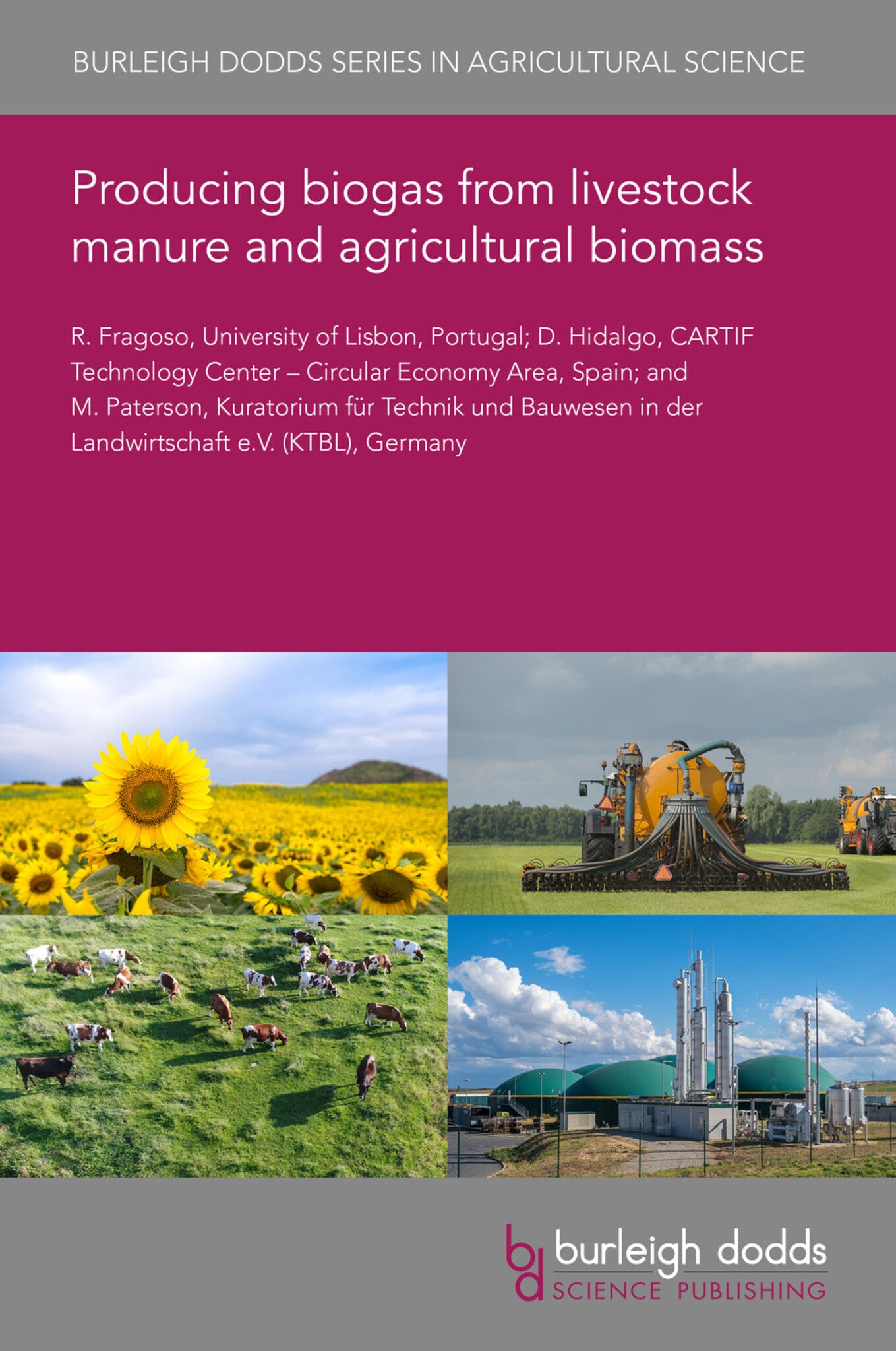We're sorry. An error has occurred
Please cancel or retry.
Producing biogas from livestock manure and agricultural biomass

Some error occured while loading the Quick View. Please close the Quick View and try reloading the page.
Couldn't load pickup availability
- Format:
-
08 January 2024

Climate change has driven the European Commission to set a strategy towards a climate-neutral Europe by 2050. There is a need to reduce greenhouse gas (GHG) emissions. In the case of the agricultural sector, biogas production can replace fossil-based energy sources and reduce methane emissions related to agricultural waste. This chapter addresses different aspects of manure-based anaerobic digestion (AD). The chapter reviews recent developments in co-digestion research. Subsequently, it addresses availability of biomass (manure, energy crops and agricultural residues) and its biomethane potential. The chapter includes case studies of differing types of agriculture-based biogas plants: (i) small-scale plants using mono or co-digestion of manure; (ii) centralized plants, which co-digest manures collected from nearby farms with agro-industrial waste.

TECHNOLOGY & ENGINEERING / Agriculture / Sustainable Agriculture, Sustainable agriculture, TECHNOLOGY & ENGINEERING / Agriculture / Agronomy / Crop Science, TECHNOLOGY & ENGINEERING / Agriculture / Organic, TECHNOLOGY & ENGINEERING / Environmental / General, TECHNOLOGY & ENGINEERING / Agriculture / Animal Husbandry, Biofuels, Agricultural science, Agronomy and crop production, Animal husbandry

- 1 Introduction
- 2 Anaerobic digestion
- 3 Recent research on co-digestion
- 4 Biomass availability and biomethane potential: livestock manure, agricultural residues and agro-industrial waste
- 5 Types of anaerobic digestion plant and their economics
- 6 Case studies: small-scale mono-digestion and co-digestion anaerobic digestion plants
- 7 Case studies: centralized anaerobic digestion plants
- 8 Conclusion and future trends
- 9 Where to look for further information
- 10 References



